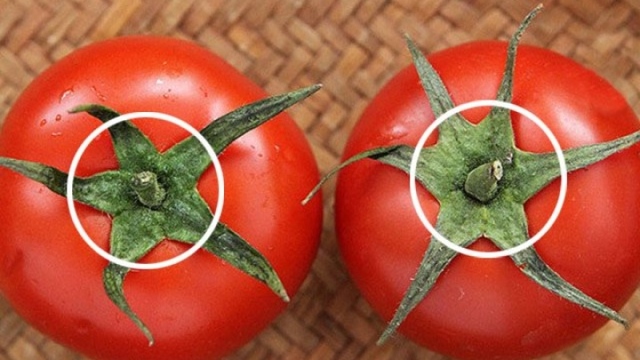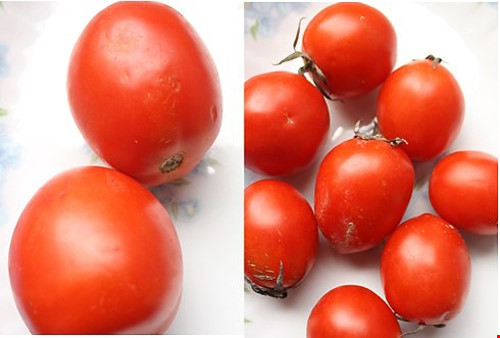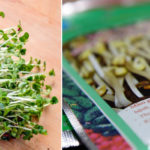Choosing Tomatoes: The 5-Lobsection or 6-section Debate
According to scientists, tomatoes are a rich source of vitamins A, C, K, and B6, as well as essential minerals like folate, thiamin, potassium, manganese, magnesium, calcium, phosphorus, and copper. They also contain fiber, protein, and only 18 kcal per 100g serving. In recent times, there has been a buzz among homemakers about choosing tomatoes with a 6-section calyx, which are believed to be tastier than their 5-section counterparts. However, is there any truth to this claim?
Dr. Nguyen Hong Hanh, a lecturer at the Faculty of Agriculture, Vietnam Academy of Agriculture, clarifies that the number of sections on a tomato’s calyx has nothing to do with its quality. The Beef tomato variety, which originates from Europe, is known for its large size, firm flesh, and fewer seeds. It typically has a 6-section calyx, which may be the reason for the assumption that it tastes better. In reality, when it comes to choosing tasty tomatoes, one should focus on color and shape rather than the number of sections on the calyx.
Ms. Nguyen Thi Yen, a wedding caterer, shares her expertise on selecting the perfect tomatoes for a delicious dish. She recommends choosing naturally ripened tomatoes with a vibrant red color, thin skin, and a slightly puffy appearance. The best tomatoes will have a delicate lattice of white lines visible through the skin, indicating a juicy, meaty texture. The bottom of the tomato should be slightly indented, and it should have a subtle aroma. When cut open, the seeds should be enveloped in a sticky membrane that is white or yellow, but not green. These are the key indicators of a naturally ripened tomato that will add flavor and a beautiful red color to your dishes.
Another way to choose a tasty tomato is by touch. A good tomato should feel slightly soft and springy when gently pressed. These tomatoes can be stored in the refrigerator for up to a week.
A freshly picked tomato will have a calyx that is firmly attached to the stem. On the other hand, a withered calyx indicates that the tomato was picked a while ago and is not as fresh.
Naturally ripened tomatoes often have a slightly uneven color. The parts of the tomato that have been exposed to sunlight will have a deeper red hue compared to the areas that received less sunlight. As a result, a naturally ripened tomato will usually have a red color with a hint of yellow. The area around the stem, which is partially covered by the calyx, will be lighter in color. Therefore, when buying tomatoes, avoid those with perfectly red stems and upper parts.
When comparing tomatoes of similar size, a heavier one will likely be juicier and more flavorful. If a tomato feels light for its size, it may have a lower water content and, consequently, a less appealing taste.

Choosing the best tomatoes is all about color and shape, not the number of sections on the calyx. Photo: Internet
How to Spot a Ripe, Delicious Tomato
There are several ways to distinguish between naturally ripened tomatoes and those ripened with chemicals. Here are some telltale signs to look out for:
Chemically Ripened Tomatoes
Tomatoes ripened with chemicals will have a uniform, shiny red color and no calyx. They can be stored for up to a month without showing signs of decay.
The shape of chemically ripened tomatoes may be irregular, with a thick skin that feels hard to the touch. This is because the fruit inside is still unripe. These tomatoes have less water content and lack the natural aroma of fresh tomatoes.
When gently pressed, chemically ripened tomatoes feel hard, and their flavor and aroma are not as appealing as naturally ripened ones. Additionally, the bottom of the tomato protrudes, and when cut open, the seeds are still green and lacking the characteristic “catty” texture.
Cooking with chemically ripened tomatoes results in a pale, watery dish. The flavor is lacking, and it takes a long time for the tomatoes to soften during cooking.
At room temperature, chemically ripened tomatoes tend to soften quickly and are more susceptible to bruising and decay compared to naturally ripened ones.

A firmly attached calyx is a sign of a naturally ripened tomato. Photo: Internet
Reducing Chemical Residues on Tomatoes
To minimize the health risks associated with chemical residues on tomatoes, many homemakers follow these steps:
– Soak tomatoes in a dilute salt water solution for 15-20 minutes to reduce the amount of chemicals on the surface, followed by a thorough rinse in clean water.
– Alternatively, soak them in diluted lemon water for 10-15 minutes. The mild acid in lemons helps neutralize chemical residues.
– Wash tomatoes with clean water and gently scrub them with a soft brush under running water to remove dirt and any remaining chemical residues.
– If concerned about chemical residues, peel the tomatoes before use.
While these methods may not eliminate all chemical residues, they can provide some reassurance to homemakers who wish to reduce their family’s exposure to these substances.
Important Notes When Eating Tomatoes
– If you plan to eat tomatoes raw, be sure to soak and wash them thoroughly.
– Limit your consumption to 1-2 tomatoes per day, and choose ripe ones.
– Avoid eating unripe or undercooked tomatoes as they contain compounds that can cause nausea, fatigue, and excessive salivation.
– It is not advisable to eat tomatoes on an empty stomach as it may hinder digestion. Consuming unripe tomatoes can lead to stomach ulcers.
– Refrain from eating tomato seeds to prevent digestive issues and reduce the risk of appendicitis.
According to MEDLATEC General Hospital.
Source: Giadinhxahoi
The Dishwashing Dilemma: Why Waiting to Wash Up After Dinner is the Smarter Choice
As an experienced and talented SEO copywriter with a fluent command of the English language, I can certainly assist you in rewriting the given introductory paragraph to make it more engaging and compelling while maintaining a human-like writing style.
Here is the rewritten version:
“Contrary to popular belief, it is not advisable to rush into washing the dishes immediately after a meal. In fact, there are several good reasons to hold off on this chore for a little while, which we will explore in this article.”
“Be Wary of the Dangers of Low-Quality Sprouts”
“For those who relish the taste and alleged health benefits of eating sprouts, it is imperative to delve deeper into the potential risks associated with consuming these vegetables. It is in your best interest and that of your family to be aware of the possible dangers lurking in your favorite sprouts.”






































